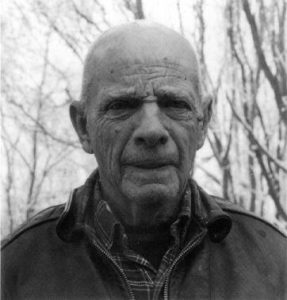
Elevating landscape painting to a kind of purity, twentieth-century Formalism also reduced it to a species of decorative, portable scenery. The question has always been whether the architect exists to provide painters with walls, or if the painter exists to decorate those walls. Either way, both are at the mercy of economies of real property, which historically have tended to shape terrain at the expense of the environment.
Discovering the influential essays of John Brinckerhoff Jackson (1909-1996) for me discredited many of the assumptions about landscape to which painters subscribe. Jackson brought me to the realization that terrain is not passive but susceptible, and ultimately indifferent. What one beholds in sweeping vistas is not physical reality, but a mirage–the reflection of human desires projected upon the land. Thus every landscape is fiction, a narrative, and a conundrum. Jackson said that “Landscape is history made visible”. It is also shaped by natural forces dictating conditions that govern life on earth. Quoting Eliade, Jackson noted that the process of organizing terrain into landscapes was a way of accelerating or delaying the process of nature; an attempt to assume the role of time, presumably to overcome mortality.
Any well-informed landscape painter should acquaint themselves with his essays, and with other writers such as John Stilgoe, James Howard Kunstler, Jane Jacobs, Frederick Jackson Turner, John Burroughs, John Muir, George Perkins Marsh, William Wordsworth, and Alexander von Humboldt, who remains the most influential of them all. Andrea Wulf’s recent biography of Humboldt is highly recommended.
Also recommended is Drawn to Landscape: The Pioneering Work of J.B. Jackson. Edited by Janet Mendelsohn and Chris Wilson. University of Virginia Press. 2015